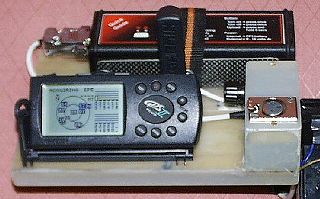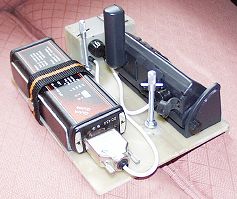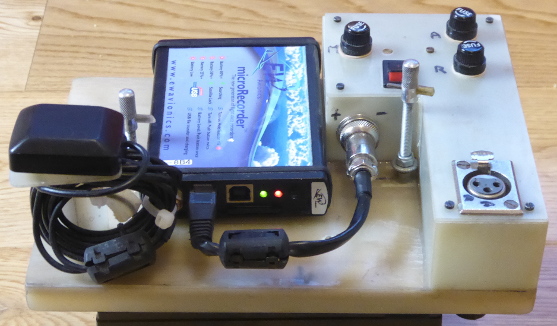

The completed battery box lid.
The original Libelle battery box was designed to hold a single 12v wet battery of a design that is no longer available. It is just too short to contain modern 7 amp-hour gel cells with their terminals at the top. It can't easily be replaced or enlarged because it is a fibreglass moulding formed integrally with the wheel box, set immediately behind the bulkhead at the rear of the spars and surrounded on both sides and the rear by control rods. However, I was soon told that the gel cells can be accommodated if they are installed on one end with the terminals to one side. Gel cells will work any way up, so this is a viable solution provided that the top of the lid, which retains the batteries, is raised by 50 mm.
I decided to make a replacement for the original dished moulding from a sandwich of 1.5 mm fibreglass/epoxy plate with 3mm balsa in the centre. The hold-downs were fabricated from M5 studding and fitted with turned, knurled knobs and tommy bars so they can be tightened down without needing tools. They are installed in 5mm ID brass tubes which are epoxied into the lid as an aid to aligning the hold downs with the threaded holes in the battery box. An M5 Nylock nut is screwed onto each hold down to act as the lid retainer. Another is screwed onto the bottom of each hold down to retain it in its tube. This prevents me dropping it into the depths of the Libelle fuselage where it would be all but inaccessible beneath the control linkages.
I built a box on the right end from glass/epoxy plate to contain two XLR connectors for the battery and an XLR socket outlet for the panel supply connector. It also contains a fuse holder and a pair of 35 amp Schottky diodes that act as an automatic battery change-over.
I mounted a holder for my EW model D flight recorder on the lid and ran its data and power cable back into the box. At this point I decided to avoid running a data cable to the panel for the flight recorder's GPS feed and, instead, mounted a second GPS II+ on the lid. A cable from this also runs back to the box, where it connects to the flight recorder cable. Both instruments draw power from the main batteries.
  |
|
The completed battery box lid. |
In 2012 the EW Model D logger was removed from the IGC's approved list when they decided that loggers must have an integrated GPS receiver. As a result I removed the Garmin GPS II+ and the EW Model D, replacing both with an EW Microrecorder and modified the connectivity built into the battery box lid. The EW Microrecorder's power is controlled by the switch and, as before, it can draw power from both main batteries. Its GPS antenna is mounted on the pylon at the front left corner of the battery box lid where it is well above the metal control rods, wing spar spigots and drag links. I've never seen drop-outs in any flight downloaded from it.
 |